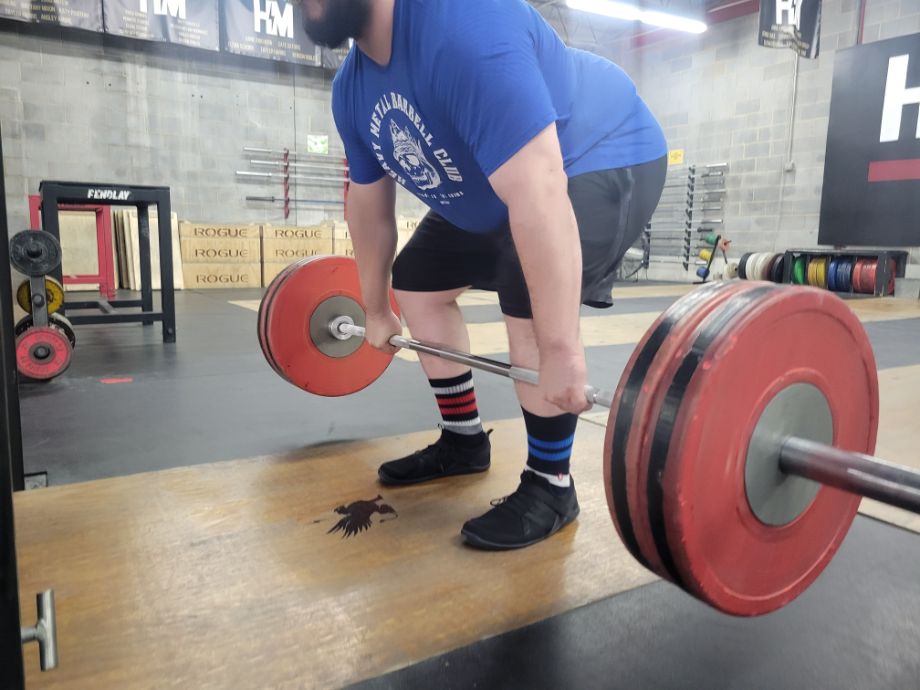We test and review fitness products based on an independent, multi-point methodology. If you use our links to purchase something, we may earn a commission. Read our disclosures.
Ask any personal trainer, weightlifting coach, or strength-based athlete what they consider the most essential lifts, and the deadlift is bound to be mentioned by nearly every last one of them.
There’s no denying that the deadlift is one of the most fundamental strength exercises, targeting muscle groups throughout the entire body to build muscle strength and size, improve posture, increase mobility, flexibility, and stability, and overall improve the lifter’s quality of life by making everyday tasks easier to perform.
RELATED: Deadlift Muscles Worked
Caine Wilkes, OLY, USAW-L1, and GGR staff writer, shares step-by-step instructions for doing the deadlift, including top trainer tips for technique, some common mistakes to avoid, and variations to keep your workout routine fresh!
How To Deadlift
- Stand over a loaded barbell with your feet shoulder-width apart.
- Bend your knees and push your hips back to reach down and grip the barbell using a mixed grip or overhand grip. Pull your shoulder blades down and back.
- Drive through your heels, extend your knees, and bring your hips forward to stand up. Keep your back straight, core tight, eyes forward, and the bar close to your shins as you move.
- Squeeze your glutes once you’re upright and at full hip extension.
- Slowly return the bar to the floor by reversing the movement.
RELATED: Best Olympic Barbell
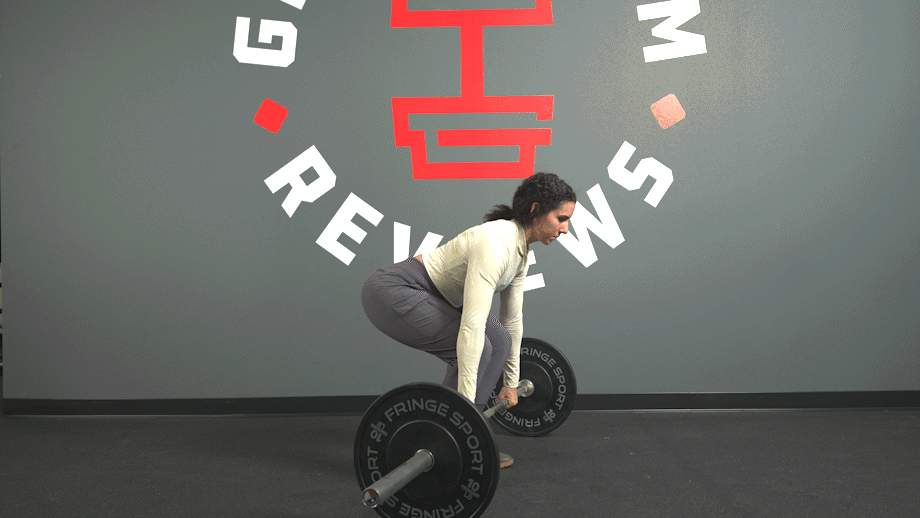
Trainer Tips for Form
There’s more to good deadlift technique than simply gripping the bar and standing up. Here are some cues to keep in mind to finetune your form and maximize those gains!
Practice Neutral Spine Positioning
According to the International Journal of Sports Physical Therapy1, “a neutral spinal alignment is considered important during the execution of the deadlift exercise to decrease the risk of injury.”
Keeping the spine in a neutral position is common for many strength training exercises because, as you progress to heavier and heavier weights, the stress placed on the lumbar spine becomes increasingly difficult to manage.
Curving the spine, whether you’re rounding the back from fatigue or hyperextending to exaggerate those natural biomechanics, is a big no-no during the deadlift and could cause complications such as low back pain, strains, sprains, and even herniated discs2.
RELATED: Lower Back Exercises
So, keep that back straight and that spine in a neutral position to reduce your risk of injury.
Experiment with Grip and Foot Position
“Taller lifters often have trouble achieving proper form with the deadlift because the distance from their waist to the floor is greater than it is for shorter people,” says Caine Wilkes, OLY, USAW-L1. “So, I recommend feet being roughly shoulder-width apart, but this can vary.”
A 2019 study published in the Journal of Sports Science & Medicine3 determined that a wider base, which is typical of the sumo deadlift variant, may be “mechanically advantageous” to taller individuals.
Your grip is equally important when it comes to finetuning your deadlift form, as wider grips tend to increase lat activation but could diminish power if you go too wide. Generally, slightly wider than shoulder-width works.
“I teach a mixed grip for heavier weights,” says Caine. “The overhand grip is very good for lower weights, but switching your dominant hand to an underhand grip helps you keep more control of the barbell during the movement.”
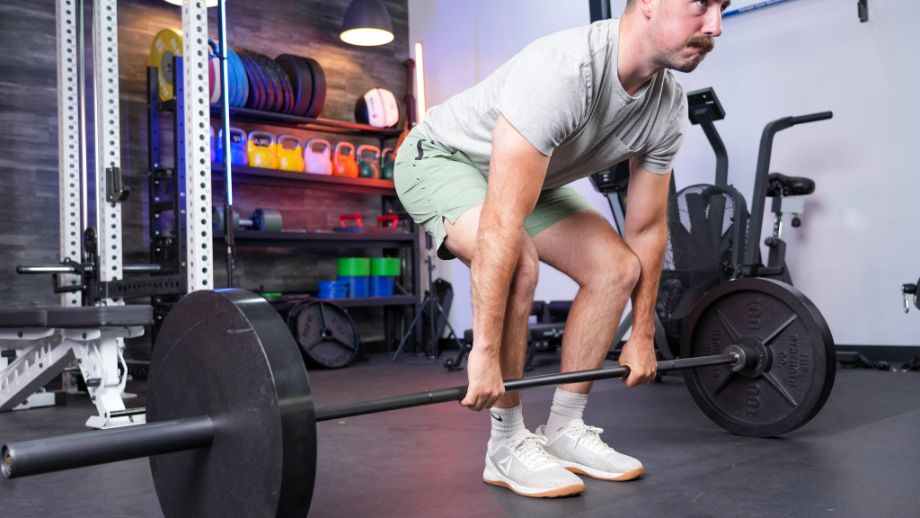
Lifting with a neutral grip is also possible if you’re using a hex bar, and according to the Journal of Strength and Conditioning Research4, “the hexagonal barbell may be more effective at developing maximal force, power, and velocity.”
For that reason, home gym owners may consider buying one of the best trap bars to take their deadlifting to the next level.
Keep Your Gaze Forward
Human nature is a funny thing. We take care to get into proper positioning during the deadlift by gripping the bar, bringing our hips back, shifting our weight onto our heels, and, even though we know we’re in position, we still feel like we need to look down at the bar as we lift it.
RELATED: Hip Hinge Exercises
Looking down could cause you to inadvertently lose that crucial neutral position required of your neck and spine, placing undue stress on these key areas.
To reduce your risk of injury, finish off getting into position by looking forward instead of down.
Keep Your Chin Tucked
Keeping your chin tucked goes hand-in-hand with gazing forward, as this is the best way to promote proper neck alignment and minimize your risk of neck injury.
Losing proper neck alignment could lead to neck hyperextension, which winds up compressing the cervical vertebrae and contributes to neck injury. Tucking your chin mitigates that risk by ensuring you maintain neutral neck alignment.
Engage Your Lats
To the untrained eye, the deadlift involves ripping a barbell off the floor using your arms. The fact of the matter is the deadlift is not an arm exercise, at least not exclusively.
“The deadlift is a full-body exercise that predominantly uses your back muscles, like the lats, and posterior chain muscles, including your glutes, quadriceps, hamstrings, and lower back, in order to move the barbell through the range of motion,” says Caine. “You’ll use your arms, too, mostly your forearms for the grip strength needed to stabilize the bar, but the deadlift primarily works your back and legs.”
So, just as we summon the strength of our lats during other back exercises like the bent-over barbell row and the pull-up, we’ll be recruiting our lats to keep the bar stable and ultimately improve our power production during the lift.
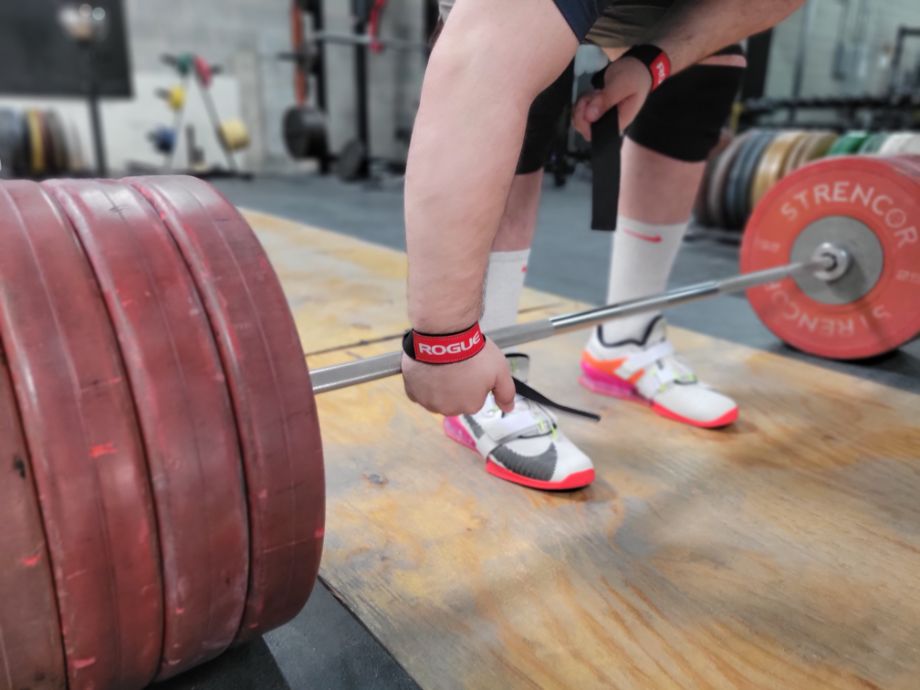
“It all starts with the setup,” says Caine. “A proper deadlift setup involves the bar above the middle of your foot, your hips vertically stacked over your shoulders, and the scapulae of your upper back positioned directly over the bar. This puts you in the prime position for your lats to engage and keep the bar close to the body where you’ll get the maximum power output and also reduce your risk of injury during the lift.”
RELATED: Best Back Exercises
Common Deadlift Mistakes
It doesn’t matter if you’re a beginner or powerlifting pro; everybody makes mistakes. Here are the most common deadlift mistakes to avoid while perfecting your form.
Rounding the Back
A straight back and neutral spine should be constant from the starting position all the way to the end of the rep. Rounding the back takes your spine out of alignment and leaves the door open to a number of nasty injuries.
“Check in with your form before initiating the lift to make sure your back is flat and your chest is tall,” says Caine Wilkes, OLY, USAW-L1. “If you’re slouching, rounding the back, or otherwise compromising your perfect posture, take a deep breath and brace the core to correct.”
Protruding Neck
Neck positioning is also of paramount importance as you deadlift heavier and heavier weights. Once you progress to heavy weights, it’ll become increasingly difficult to move the bar throughout the full range of motion, and so, to “eke out” that last little bit of the rep, people push themselves and compromise perfect spinal alignment.
RELATED: How to Deadlift Heavier
Letting your neck jut forward takes your neck out of alignment and leaves you susceptible to undue stress and the possibility of injury. To minimize your risk of injury, keep that neck neutral and in line with the spine at all stages of the lift.
Arching the Back
“Back hyperextension, or arching of the back, is most common at the end of the movement,” says Caine. “Many people get excited after getting through the hardest part of the lift so, instead of squeezing the glutes and back muscles at the top, they also arch the back and wind up overexaggerating the movement.”
This is no bueno. Arching the back, just like rounding the back, compromises proper spinal alignment and increases your risk of injury.
We know deadlifting a heavy barbell is exhilarating, but make sure you don’t arch that back at the top. To guarantee you don’t consider working with a personal trainer, a training partner, or record your lift to watch back later so you can see for yourself if you’re picture perfect.
Bar Not Close to the Body
It’s uncomfortable to feel the stainless steel of a barbell graze your shins as you initiate the deadlift motion, but keeping the bar close and maintaining a virtually straight bar path both reduces your risk of injury while also enabling you to engage your lats properly.
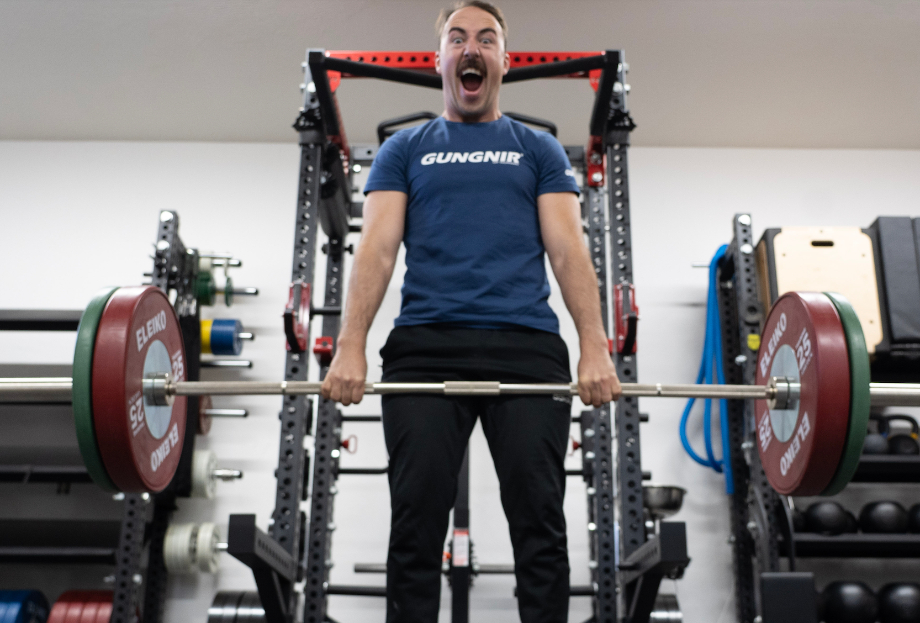
To guarantee you execute your lift flawlessly, take an extra minute on the setup to make sure your foot and hand positioning are both correct, your hips are back, your back is flat, your core is braced, and your torso is tall.
As long as your starting position is perfect, it’s significantly less likely that bar will get away from the body and cause complications.
Editor’s note: I injured my back pretty significantly in my early lifting days by not paying attention to my form while deadlifting just the empty bar. Don’t be like me; heed these tips and take care of your precious back.
Deadlift Variations
The conventional deadlift is a favorite for bodybuilders, powerlifters, and CrossFit athletes, but it’s not the only way to build impressive upper and lower body strength.
Here are some deadlift variations that will help keep your workout routine fresh!
Dumbbell Deadlift
Swapping your barbell for a pair of dumbbells offers upside beyond the bilateral version.
The dumbbell deadlift allows you to use an overhand grip, like the traditional barbell deadlift, or a neutral grip, like the trap bar deadlift, so you can change the stimulus to the target muscles.
Using two dumbbells rather than one barbell also converts the typically bilateral exercise into a unilateral movement, allowing you to correct muscle imbalances and bilateral deficits.
To perform, simply perform the deadlift following our step-by-step instructions above, but use two dumbbells instead of a barbell.
RELATED: How to Deadlift with Dumbbells
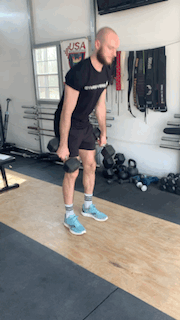
Sumo Deadlift
The sumo deadlift is identical to the standard deadlift at a glance, but it involves widening your base so that your feet are beyond shoulder-width. Doing so reduces the range of motion and accommodates taller lifters while lowering your center of gravity, so you’ll often be able to lift heavier on the sumo deadlift versus the regular deadlift.
To perform the sumo deadlift, set up just as you would for the conventional deadlift, then widen your base just a bit. You don’t need to go overboard; slightly outside shoulder-width works well.
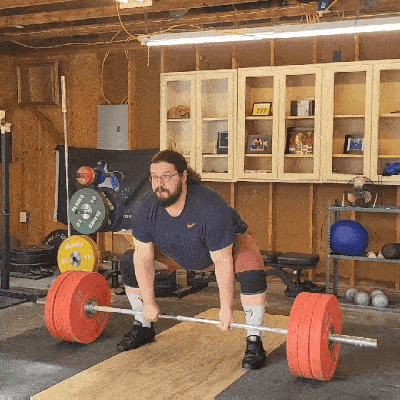
Single-Leg Deadlift
The single-leg deadlift, more accurately known as the single-leg RDL (or Romanian deadlift), is a unilateral deadlift variant that, due its stiff-legged positioning, emphasizes the eccentric phase of the deadlift and provides superior hip, glute, and hamstring activation.
According to the International Journal of Exercise Science5, the single-leg deadlift is preferred for targeting the biceps femoris, gluteus medius, and erector spinae. Here’s how to do it:
- Stand with feet hip-width apart.
- Lift one foot off the floor and slightly bend the knee of your other leg.
- Push your hips back and bring your chest toward the floor letting your raised leg float behind you as you descend. Continue until you feel a stretch in your hamstring.
- Drive through the heel of your planted foot to return to the starting position.
- Finish all reps, then switch sides and repeat the whole set.
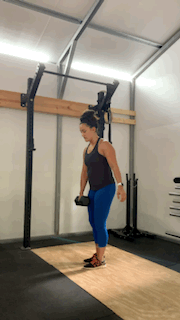
Useful Deadlift Equipment and Accessories
You’ll need a loaded barbell and your lovely self at bare minimum if you’re going to get in a set of deadlifts, but there are a few things that might make the task more manageable.
Deadlift Shoes
The best shoes for deadlifting boast a number of features aimed at improving your performance. They feature a hard, flattened sole that provides the lifter more contact with the floor, which translates to more stability and improved balance to make the lift feel easier.
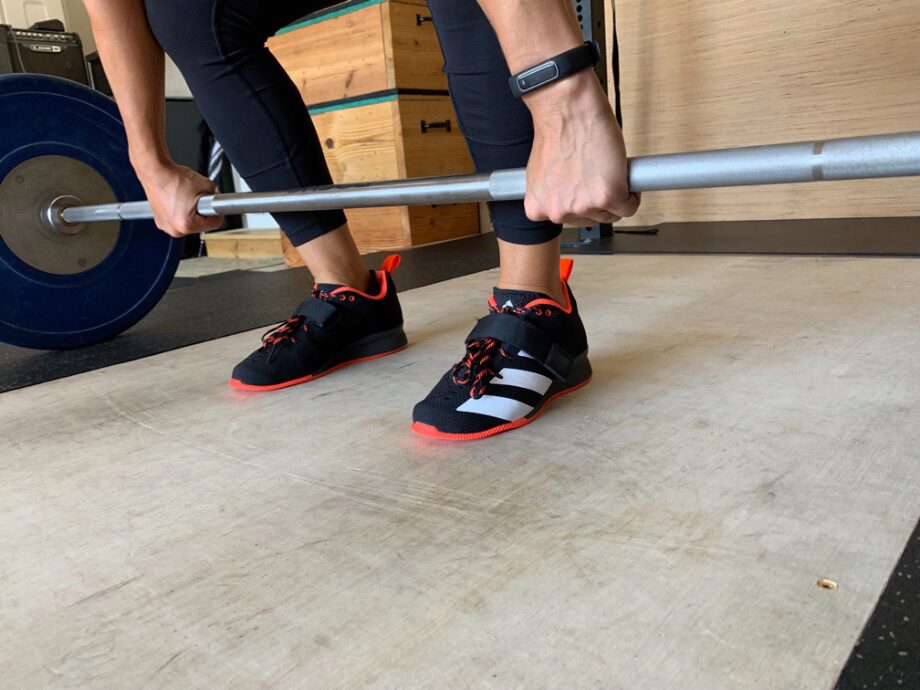
If you’re used to lifting while wearing regular sneakers, slipping on a pair of actual deadlift shoes may be just the thing to break your current plateau and put up a new PR without doing any extra leg work; no pun intended.
Lifting Straps
Traditional strength training programs often keep the rep scheme low for deadlifts, but programs designed to improve hypertrophy and muscular endurance are programming high-rep deadlift sets more and more often.
And, the more you churn out rep after rep off the deadlift, the more your poor grip starts to slowly fail. The best lifting straps provide an extra safeguard against dropping the bar mid-set, letting you keep repping away so long as your major muscle groups are still firing on all cylinders.
Lifting straps are prohibited at most powerlifting competitions, but they’re invaluable for certain training modalities and make a great accessory during the longer and tougher sessions.
Lifting Chalk
What’s not to love about chalk?
It’s cheap, it’s portable, and it removes moisture from your sweaty palms so you can keep that gorilla grip on the barbell and blast through heavy sets of deadlifts like they’re nothing.
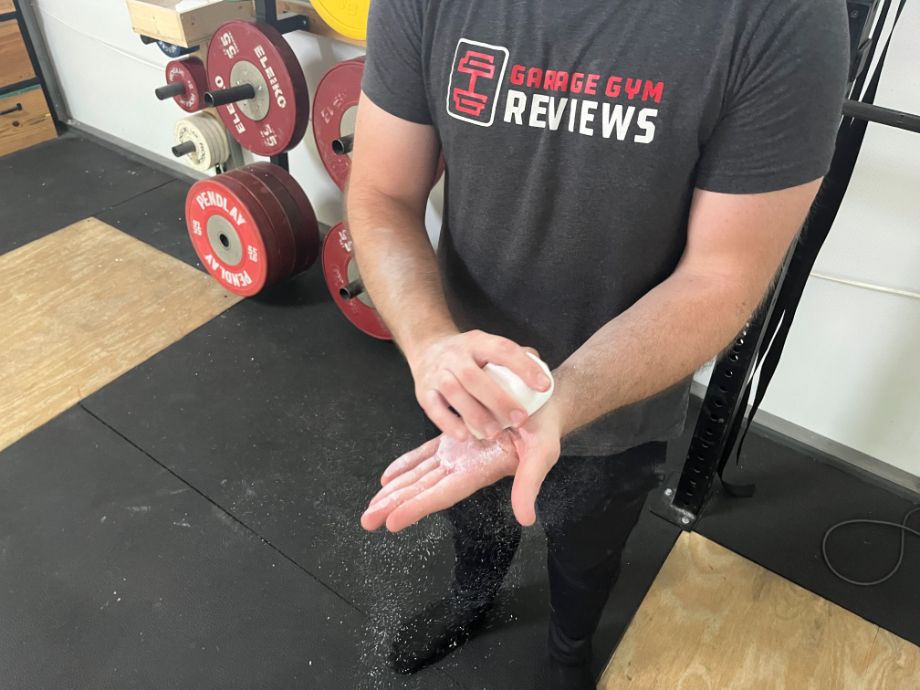
Okay, I guess chalk does have a nasty habit of coating everything in a five foot radius and often spills inside your gym bag, but we still recommend using the best lifting chalk for protecting your hands and maximizing the amount you’re able to deadlift.
Deadlift: FAQs
What’s the difference between squats and deadlifts?
Most fitness enthusiasts are familiar with the big three lifts—the bench press, the squat, and the deadlift. The squat and the deadlift are much more similar than the bench, leading folks to wonder what the main differences are in the first place.
The squat primarily works muscles in the front of the body and involves getting the hips in a down position, whereas the deadlift works the back or posterior portion of the body while requiring the hips be pushed back.
RELATED: Powerlifting Workout
Squats are also classified as a pushing exercise, whereas the deadlift involves pulling.
What is deadlifting good for?
Deadlifts offer a lot of advantages to the lifter. They’re one of the best exercises for building overall muscle size, strength, and endurance, improving explosive power, enhancing posture and core stability, and alleviating low back pain, too.
What are the disadvantages of deadlifts?
“Deadlifting with proper form makes it possible to move a ton of weight,” says Caine Wilkes, OLY, USAW-L1, and GGR staff writer. “That’s inherently very risky, and if you’re holding that much weight, your risk of injury becomes greater.”
So long as you’re maintaining perfect form throughout the movement, your overall risk of injury should be low, but there’s always some risk associated with pushing your limits in weightlifting.
To minimize your risk further, make sure you kick things off with the best warm-up exercises, get in some solid working sets, and only push your limits a small percentage past your previous one-rep max. Working with a personal trainer, strength coach, or other fitness professional helps, too.
RELATED: Best Online Personal Trainer
References
1. Bengtsson V, Aasa U, Öhberg F, Berglund L. Thoracolumbar And Lumbopelvic Spinal Alignment During The Deadlift Exercise: A Comparison Between Men And Women. Int J Sports Phys Ther. 2022;17(6):1063-1074. Published 2022 Oct 2. doi:10.26603/001c.37859
2. Yanagisawa O, Oshikawa T, Matsunaga N, Adachi G, Kaneoka K. Acute Physiological Response of Lumbar Intervertebral Discs to High-load Deadlift Exercise. Magn Reson Med Sci. 2021;20(3):290-294. doi:10.2463/mrms.mp.2020-0052
3. Cholewa JM, Atalag O, Zinchenko A, Johnson K, Henselmans M. Anthropometrical Determinants of Deadlift Variant Performance. J Sports Sci Med. 2019;18(3):448-453. Published 2019 Aug 1.
4. Camara KD, Coburn JW, Dunnick DD, Brown LE, Galpin AJ, Costa PB. An Examination of Muscle Activation and Power Characteristics While Performing the Deadlift Exercise With Straight and Hexagonal Barbells. J Strength Cond Res. 2016;30(5):1183-1188. doi:10.1519/JSC.0000000000001352
5. Diamant W, Geisler S, Havers T, Knicker A. Comparison of EMG Activity between Single-Leg Deadlift and Conventional Bilateral Deadlift in Trained Amateur Athletes – An Empirical Analysis. Int J Exerc Sci. 2021;14(1):187-201. Published 2021 Apr 1.
Further reading

The traditional push-up is a great bodyweight exercise to build upper body strength. These 17 expert-approved push-up variations can help shake up your routine. Read more

From compound lifts to core exercises, our all-encompassing military workout will prepare you to excel in whatever branch you choose. Read more

Get your heart and muscles pumping with this trainer-created kettlebell HIIT workout. Read more

Our Orgain Protein Shake review dives deep into a creamy, delicious shake made with organic ingredients that can fuel your fitness journey. Read more

